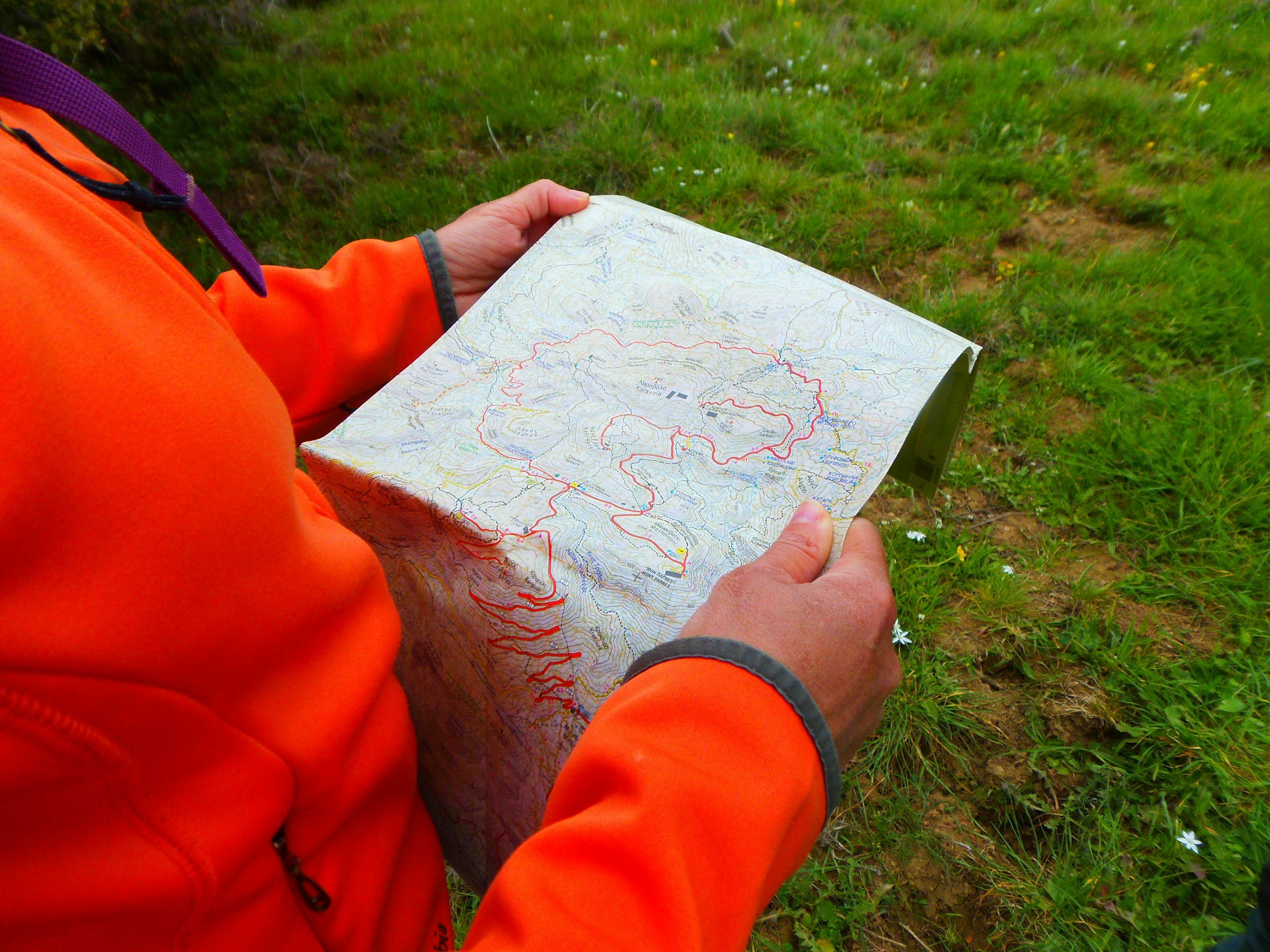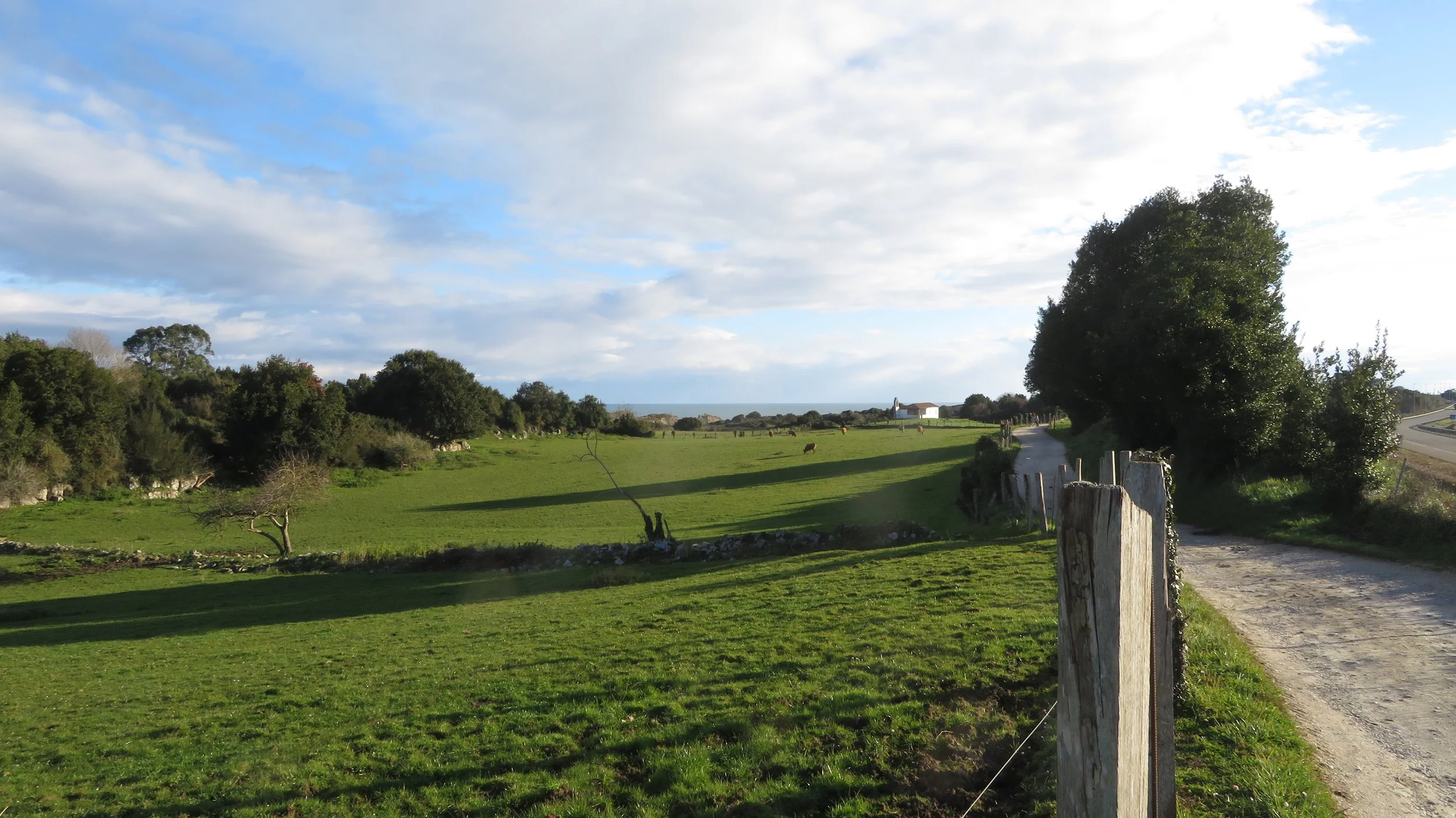PR-AS 196 Ruta de los Misterios del Mar - Complete Walking Guide
🔗 Real Stories, Local Secrets, and Slow Travel in Northern Spain.
FLAVOUR TRAILS | SOUL OF THE NORTH | WILD ASTURIAS | FAMILY EXPLORERS | PROPERTY PULSE | ALL
This is map link WikilocRuta de los Misterios del Mar PR AS-196
Ruta de los Misterios del Mar PR AS-196
es.wikiloc.com/rutas-senderismo/ruta-de-los-misterios-del-mar-pr-as-196-21269051
Why This Coastal Walk Will Surprise You
What I love about the PR-AS 196 route is how it perfectly combines everything that makes coastal walking in Asturias special. This complete loop from La Isla to Playa de la Griega gives you dramatic clifftop views where the sea stays with you throughout the outbound journey, constantly changing character as you watch fishing boats dot the horizon near Lastres and scan the waves for dolphin fins. Then you reach the incredible destination - Playa de la Griega with its 150-million-year-old dinosaur footprints - before returning through the peaceful rural villages of San Juan de Duz and Huerres.
Dinosaur Footprints
Alba's favorite part is definitely reaching the dinosaur footprints, though she's also become surprisingly good at spotting dolphins along the coastal section. What struck me most about this route is how it delivers everything in one perfectly designed loop: dramatic clifftop scenery, paleontological discovery, and traditional rural communities.
The official PR-AS 196 route on Wikiloc has become our go-to coastal walk because it maintains that sense of tranquil discovery where you might walk for hours hearing only cowbells and birdsong, yet rewards you with one of the most significant paleontological sites in northern Spain.
The Trail Experience
Starting at La Isla Beach
The walk begins behind the information panel at La Isla beach, where you can park near the small church or along the roadside. From here, the route initially seems to head toward the beach itself before climbing steps that lead you up onto the coastal rasa - the elevated marine terrace that will be your walking surface for most of the journey.
Important GPS Note: The path follows closer to the coastline than some digital maps indicate for the first few hundred meters after leaving La Isla beach. This isn't a mistake - it's simply how the route actually runs, staying true to the clifftop rather than digital approximations.
Through La Isla Village
After the initial coastal section, you'll briefly return to La Isla village, where a traditional hórreo (raised granary) marks your passage through the settlement. Turn right here and follow the street markers until you reach the point where the route leaves the village streets for good, marked by clear signage directing you right onto a dirt path.
The Coastal Path to La Griega
This is where the magic happens. The coastal section takes you along dramatic cliffs and through the elevated marine terraces (rasa costera) that characterize this stretch of the Dinosaur Coast. For several kilometers, you'll walk a path that hugs the shoreline, threading between the Cantabrian Sea below and the Sierra del Sueve rising behind you.
Alba and I have learned to time this section perfectly: aim for mid-afternoon on a clear day when the sun will be behind you, lighting up the Sueve range ahead and the sea below. High tide creates the most dramatic wave action against the cliffs, and this is when you have the best chance of spotting dolphins offshore. Pack binoculars to scan the water - we've had incredible luck with marine life sightings along this stretch.
The informational panels about Asturian mythology (which give the route its name) add cultural context to the spectacular natural setting, while Lastres becomes increasingly visible in the distance as you progress west along the coast.
Reaching Playa de la Griega
Your coastal walking culminates at Playa de la Griega, home to one of Asturias' most remarkable paleontological sites. Here, 150-million-year-old dinosaur footprints are preserved in the rocky shore - a tangible connection to the Jurassic period that gives this region its "Dinosaur Coast" designation.
Tide-Dependent Discovery: The dinosaur footprints are best viewed at low tide when more of the rocky platform is exposed. Check tide tables before your walk if paleontology is a priority. Even at high tide, the wild, unspoiled character of this beach makes it a worthy destination.
The Return Through Villages
Rather than retracing the coastal path, the official PR-AS 196 route returns via an inland loop through the traditional villages of San Juan de Duz and Huerres. This section follows local roads and countryside paths, offering a completely different perspective on rural Asturian life.
In Huerres village, look for the weathered stone trough and metal frame - an old horse-shoeing stand that reminds you these quiet communities once bustled with farming activity. The contrast between the dramatic coastal walking you've just completed and this peaceful rural landscape perfectly captures the diversity of the Asturian countryside.
What to Pack
Essential Gear
Sturdy walking shoes with good grip - Some sections can be muddy, especially after rain, and the clifftop path includes uneven terrain
Light windproof jacket - Coastal breezes can be strong and unpredictable
Water and snacks - No facilities along the route itself
Sun protection - Limited shade on the coastal sections
Recommended Extras
Binoculars - Essential for dolphin spotting and observing fishing boat activity
Camera with good zoom - The coastal views and Lastres in the distance are spectacular
Tide tables - If you want to see the dinosaur footprints at La Griega
Small backpack - Comfortable for the 3-4 hour journey
Family Considerations
Extra snacks and entertainment for children
First aid basics - You're walking in remote coastal areas
Layered clothing - Weather can change quickly near the sea
Essential Information
Route Specifications
Distance: 7.6 km complete loop (La Isla → Playa de la Griega → La Isla)
Difficulty: Moderate - there are some steep sections (40m elevation gain, varied terrain)
Time: 2.5-3 hours for complete loop
Route Character: Coastal path outbound, rural roads/paths return
Surface: Coastal cliffs, beach access, village roads, countryside paths
Signage: Well-marked as official PR-AS 196 route since 2015
Access and Parking
Starting Point: La Isla beach, Colunga (6 km from Colunga town center)
Parking: Free parking near La Isla beach church or roadside in the village
Alternative Start: Huerres village (limited parking by the chapel or roadside)
GPS Coordinates: 43.4892°N, 5.2668°W (La Isla beach)
Distance from Cities: 45 minutes from Gijón, 50 minutes from Oviedo
Getting There
From Oviedo: 50 minutes via A-8, exit 337 Colunga, follow N-632 to La Isla
From Gijón: 45 minutes via A-8, same exit
Public Transport: ALSA bus service Oviedo-Ribadesella line stops in Colunga and at La Isla on request (check current timetables - schedules are infrequent)
Best Conditions
Optimal Weather: Clear days with light winds for best coastal visibility and dinosaur footprint viewing
Ideal Timing: Mid-afternoon when western sun illuminates the sea and Sierra del Sueve
Tide Considerations: Low tide essential for optimal dinosaur footprint access at La Griega
Seasonal Notes: Spring brings wildflowers to the coastal turf; autumn offers crystal-clear mountain and sea views
Safety Considerations
Path runs close to clifftops in some sections - keep children close
Weather can change quickly on the coast
No mobile coverage in some remote sections
Inform someone of your walking plans
What Makes It Special
The Geological Story
Walking the PR-AS 196 is literally a journey through time. The elevated marine terrace you're walking on formed during past ice ages when sea levels were different, while your destination at La Griega preserves footprints from creatures that lived 150 million years ago. It's this combination of recent geological processes and ancient paleontological treasures that makes the route unique.
Cultural Connections
The informational panels along the route detail Asturian mythology and maritime traditions, connecting you to the cultural landscape as well as the physical one. The name "Misterios del Mar" (Mysteries of the Sea) reflects centuries of local folklore about this dramatic coastline.
Marine Life Opportunities
The consistent offshore depth and clean waters along this section of coast create excellent conditions for marine life. Dolphins are regularly spotted, and the fishing boats you'll see working these waters are testament to the area's biological richness.
Photography Paradise
The combination of foreground wildflowers, middle-distance clifftops, and background mountains with sea creates layered compositions that work in any light. Lastres in the distance provides a perfect focal point for telephoto shots, while the curved coastline offers classic wide-angle opportunities.
Explore Huerres Village
Your endpoint deserves a moment of appreciation. This tiny farming village represents authentic rural Asturias, where the old horse-shoeing stand reminds you of the area's agricultural heritage. The contrast between the dramatic coastal walking you've just completed and the peaceful village setting creates a perfect transition.
Return to La Isla Beach
Back at your starting point, La Isla's small but authentic fishing village atmosphere includes traditional architecture and a peaceful beach that's perfect for post-walk relaxation. After hours of clifftop walking, the gentle lapping of waves feels like the perfect reward.
Connect to Lastres
The village you've been seeing in the distance throughout your walk is only a short drive away. Lastres offers everything from seafood restaurants like Casa Eutimio and El Barrigón de Bertín to artisan shops. The perspective you've gained from walking the coastal path makes arriving in Lastres by road feel like completing a visual puzzle.
Visit the MUJA Museum
The Museo del Jurásico de Asturias is perched on the cliffs between your walking route and Lastres. Even if you don't go inside, the dinosaur sculptures outside make a fun photo-op, and the museum's clifftop location means you can look back toward the coastal path you've just walked.
Extend to La Griega
If dinosaur footprints intrigue you, the separate PR-AS 134 "Ruta entre Playas" continues west from Huerres to Playa de la Griega. This inland trail adds another 1.5 km each way but rewards you with access to 150-million-year-old footprints preserved in the rocks (accessible at low tide).
Planning Your Visit
Ideal Combinations
Half Day: PR-AS 196 + lunch in Lastres at El Barrigón de Bertín
Full Day: PR-AS 196 + MUJA museum + Lastres exploration
Extended Walking: Combine with PR-AS 134 extension to La Griega for dinosaur footprints
Weather Contingencies
Rainy Days: Path can be muddy but still walkable with proper footwear
Windy Conditions: More dramatic sea views but ensure secure clothing
Hot Weather: Start early for cooler walking and better marine life chances
Extended Explorations
This walk connects seamlessly with other sections of the Camino del Norte, making it possible to create multi-day walking itineraries along the Dinosaur Coast. The nearby Caravia coastal section toward La Espasa and Arenal de Morís offers additional easy coastal walking for those wanting to extend their experience.
The PR-AS 196 Ruta de los Misterios del Mar delivers exactly what it promises: a genuine discovery of one of Asturias' most spectacular coastal sections, where every turn reveals new perspectives on this ancient landscape. The tranquility of the sea truly becomes your companion, with views of the 1000-meter Sierra del Sueve creating an unforgettable backdrop to your coastal adventure.
Related Coastal Adventures
Next in Series:
La Griega Extension - Following Dinosaur Footprints - Extend your coastal adventure
La Espasa to Arenal de Morís - Family Coastal Walk - Perfect for children
Camino del Norte Coastal Section - Walking with pilgrims
Cultural Connections:
Lastres: Village Life on the Dinosaur Coast - Your coastal walk destination
MUJA Museum: Journey Through Jurassic Asturias - Perfect post-walk cultural stop




